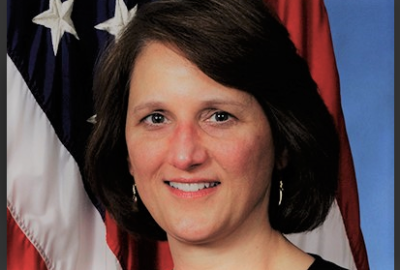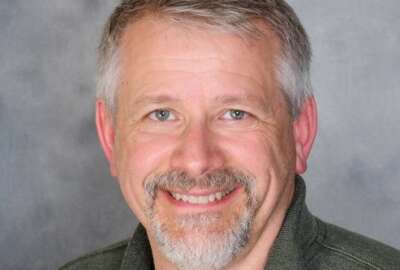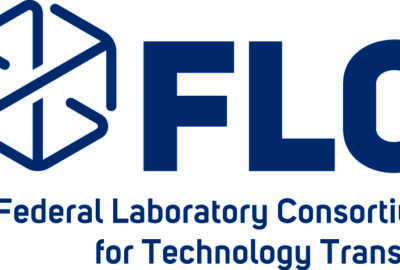A new crew takes over leadership of the Federal Laboratory Consortium
John Eisemann, the new vice chair of the Federal Laboratory Consortium and a technology transfer program manager at the USDA National Wildlife Research Center,...
Best listening experience is on Chrome, Firefox or Safari. Subscribe to Federal Drive’s daily audio interviews on Apple Podcasts or PodcastOne.
You might not realize the extent of the federal government’s network of laboratories. They fund or conduct research in nearly every domain and help make sure the results find their way into the market. John Eisemann is the new vice chair of the Federal Laboratory Consortium, and in his day job, he’s a technology transfer program manager at the Agriculture Department’s National Wildlife Research Center. For the second in our four-part series, he joined Federal Drive with Tom Temin.
Interview transcript:
Tom Temin: Mr. Eisemann, good to have you on.
John Eisemann: Thank you, Tom, it’s good to be here.
Tom Temin: So give us a brief extent of the Federal Lab Consortium. It’s a lot of members, isn’t it? Tell us about what they do.
John Eisemann: The Federal Lab Consortium is a large organization that was authorized by Congress back in 1986, with the passage of the Federal Technology Transfer Act, and by “large” I’m talking 300 federal laboratories that are represented in 23 federal agencies. So it encompasses the entire scope of the US R&D world, everybody’s represented. We represent the collective strength of about $150 billion invested annually by the federal government research and development. So as I said, we go back to 1986, when Congress passed the Federal Technology Transfer Act, and at that time, they gave us the mission to increase the impact of federal laboratories’ technology transfer efforts out of federal laboratories to benefit the U.S. economy, national security and society. And it’s our vision to be recognized as the premier entity for federal technology transfer.
Tom Temin: So it’s fair to say the consortium has specific responsibilities itself. Aside from the individual responsibilities of the labs — you’re not just a clearinghouse for chit chat, but there is that function of aiding technology transfer?
John Eisemann: That’s exactly right. I would say in general, the consortium is made up of federal technology transfer professionals. And by that I mean, such as myself at the National Wildlife Research Center, my role is to serve as a technology transfer coordinator to look for private industry and private investment in developing federal technologies that meet our particular mission. But I also serve on the federal laboratory consortium as the incoming vice chair and currently the regional coordinator. So the consortium is really made up of people like myself who work in this space.
Tom Temin: Maybe this is a good point to have you tell us exactly what you do as a technology program manager and maybe start with what they look at at the National Wildlife Research Center. I imagine there are researchers that work there and also you do granting of research externally. So tell us how that works and what the tech transfer program itself looks like.
John Eisemann: Sure. So first point is our particular lab does not have a grant program. USDA has multiple grant programs with our particular laboratory does not. So our lab, the National Wildlife Research Center, used to be called the Denver Wildlife Research Center, and we’ve been around since 1936. Our mission is to look at developing new tools and technologies management techniques for when wildlife and humans are in conflict. And that could be just about anything you might pose to me might fall within our realm. For instance, bird airstrikes, or birds and airplane collisions are a big human safety issue at almost all of our national airports. And so we have people on the airport facilities that do nothing but manage birds to reduce the risk of bird airstrikes. Our laboratory, particularly our Sandusky, Ohio, Field Station, their sole research focus is to mitigate those risks. That’s one example of human-wildlife conflict. Urban deer are an issue throughout the United States —
Tom Temin: Oh, yes they are.
John Eisemann: They love seeing deer, but they don’t want to see so many of them when they’re eating their expensive flowers. So how do you manage those populations? Back in the early 2000s, we developed a contraceptive vaccine, which you trap and inject an animal or guard it remotely and it’ll render that animal infertile for a number of years. Another issue that we work on is near-car collisions. And this is one of our newest technologies, which recently got some media play. And that is a lighting system on the front of the vehicle that is shown to cause deer to react to that vehicle sooner, given that deer an opportunity to get away from the car and thereby reducing car collisions. We do a lot of work with wildlife disease surveillance in zoonotic diseases. That’s obviously been in the news recently with COVID and the ties to the bats, monkeys – and so we do a lot of work looking at environmental surveillance of trying to detect where the vectors of potentially zoonotic or agriculturally important diseases, where are those vectors? Can we develop surveillance systems and early detection system?
Tom Temin: We’re speaking with John Eisemann. He’s a technology transfer program manager at the USDA National Wildlife Research Center, and the newly elected vice chairman of the Federal Laboratory Consortium. And when you develop a technology like that, then your job becomes to transfer it somehow to commercial. Tell us briefly how that works, say this deer lighting, anti-deer lighting system.
John Eisemann: Sure, along with the establishment of the FLC, the Federal Technology Transfer Act also gave federal scientists the ability to patent, and federal government the ability to license patents to private industry. So for that particular invention, the deer lighting idea, we did the research, we submitted a patent application to the U.S. Patent and Trade Office, and then we basically did a media blast, press releases, contacting trade organizations, advertising that this technology is available. And so that’s one way we can do it. Another way that we can do it is we can seek research partners, not necessarily licensing but research partners, and get them into a whole variety of agreements, like material transfer agreements, confidentiality, but the best one is the Cooperative Research and Development Agreement, because that gives a lot of benefits to our partner, such as confidentiality and exclusivity opportunities to license. And so we can bring private industry into our research efforts earlier through something like the Cooperative Research and Development Agreement, and then downstream, they have rights to that product. So there’s a lot of ways we can transfer technology out of federal laboratories.
Tom Temin: And getting back to the consortium, then, do you – well, in normal times – do consortium members get together in person? Do you have a convention or conferences? And do you also exchange best practices and new ideas for this whole technology transfer process?
John Eisemann: Yeah, we certainly do. It’s a very active organization. We’re all volunteers. We go through an election process, we have an established executive board, which is the chair and vice chair, treasurer, Secretary, but then also regional coordinators, as well. And like I said, it’s all other duties as assigned compared to our day job, but it’s something we feel pretty strongly about. So we get together. We have a national meeting once a year, generally in April, this coming year will be in Cleveland, Ohio. In addition to that national meeting, we have a lot of regional meetings that go on, they could be technology-focused spotlights where we try to match federal laboratories with the industry in the area. We do a lot of promotional activities geared at trying to highlight what federal research entities are doing, and the opportunities to develop private businesses out of them. As I mentioned, we have regions — we have six different regions based in geography at this point, the Far West, Mid-Continent is the region that I’m the chair of – it’s basically the Great Plains states from the Dakotas down to Texas — Midwest, Southeast, Mid-Atlantic, Northeast, I hope I didn’t miss anybody.
Tom Temin: Well, I think you give us a sense of the scope of what’s going on here. And just to wind up, sounds like this is something that’s a personal interest or passion of yours, you’re not just kind of going through the motions here, are you?
John Eisemann: No, no, I really enjoy working with this organization. I’ve been in quite a few professional organizations and really enjoyed working with them as well. But there’s something about the FLC that the membership is what really makes it great. It’s everybody’s really passionate about what they’re doing. Yes, it is related to their day job, but it’s such an extension. And the thing that I really like about it is that it gives me the opportunity to bring our small little wildlife lab into the federal spotlight another way. Because now I have connections to the Department of Defense, to NASA, to any organization within the federal government you might think about, and I now have a way to make connections from my laboratory and people within my region to advance the type of work we do. Very passionate group of people and a huge network of opportunity, my participation brings.
Tom Temin: John Eisemann is technology transfer program manager at the USDA National Wildlife Research Center and the newly elected vice chairman of the Federal Laboratory Consortium. Thanks so much for joining me.
John Eisemann: Thank you very much.
Tom Temin: Tomorrow in part three, we’ll speak with Paul Zielinski, the executive director of the consortium.
Copyright © 2025 Federal News Network. All rights reserved. This website is not intended for users located within the European Economic Area.
Tom Temin is host of the Federal Drive and has been providing insight on federal technology and management issues for more than 30 years.
Follow @tteminWFED






